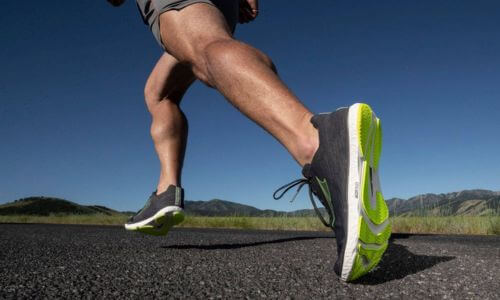
There are so many different types of running shoes. That’s because different shoes do different jobs, so it’s no surprise that there is a whole world of running trainers out there.
If you’re feeling like Cinderella, then let us break it right down for you so that you can find your perfect pair of shoes and head out for a run with a hop and a skip and a jump in your step.
DIFFERENT TYPES OF RUNNING SHOES: A BEGINNER’S GUIDE
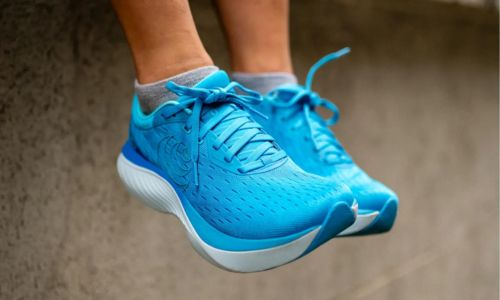
Neutral Running Shoes
A neutral shoe is one that has a regular amount of support, for those with average to high arches in their feet. A neutral shoe will give you everything you need in terms of support for everyday training. Whether you need a neutral shoe should be determined by a gait analysis, and this will be the basis of your running shoe rotation, which we will talk about more in a moment.
The Topo Atmos range are a great shout!
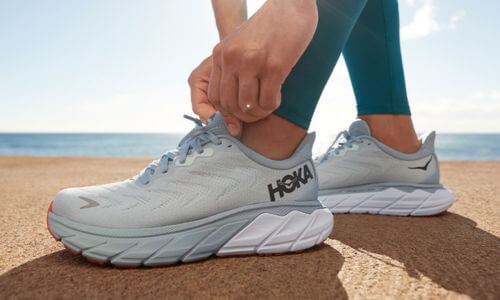
Stability Running Shoes
If you have flatter arches or even overpronation, a stability running shoe for your everyday trainer is likely to be more appropriate. A stability shoe is an alternative to a neutral, and they will give you extra support to bring your foot into that neutral position which will help you run for longer, minimise injury, and also look after your joints and body while running.
The Hoka Arahi range are an exceptional stability shoe.
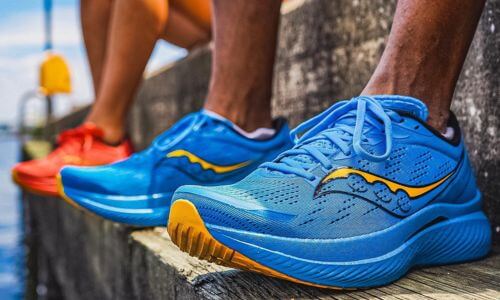
Race Shoes
Race shoes are typically a little lighter than your everyday shoe, offering a slicker profile and something that is a little more aerodynamic, so to speak! Obviously we love a well made shoe, but it is no secret that race day shoes are built more for speed rather than to stand the test of time, as you are going to be using them less.
Saucony’s Endorphin Speed range are a fantastic option for race day.
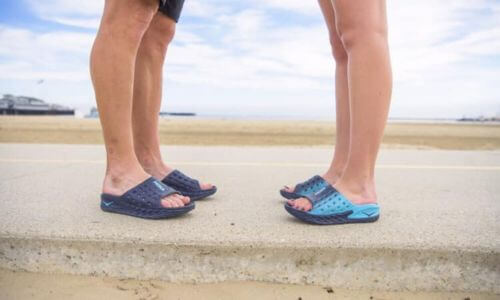
Recovery Shoes
Possibly our favourites, but recovery shoes are the ones designed to give your feet a little TLC post race or big run, offering unrivalled comfort and a healthy dollop of support to make sure that your feet come back fighting fit when you’re ready to get back to it. In recovery, cushioning is key, and so you should be looking for something that feels like a cloud on your feet, heavenly, we know.
We recommend Hoka’s Recovery Slide Sandals
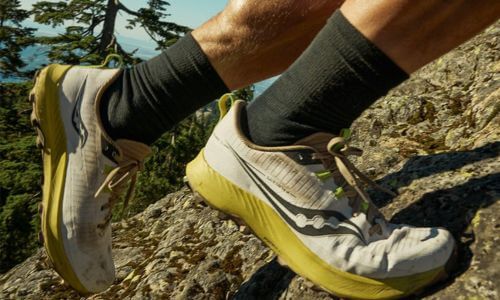
Trail Running Shoes
Trail running is a different beast to road running and don’t we know it. Trail shoes are made of much tougher stuff, designed to be able to tackle the rocky terrains and unchartered territories that trail running brings. They’re often a little more rugged, hard-wearing, and not afraid of a little mud.
Saucony’s Peregrine range are a top choice, along with Hoka’s Speedgoat trail shoes.
New to trail running? Check out our Trail Running Guide For Beginners.
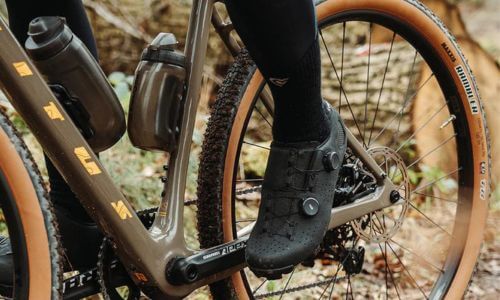
Cycling Shoes
An honorary mention to cycling shoes, who we would not be without. Cycling shoes are very different to runners, and not only for the fact that it’s a different sport, but technically a whole different spec is needed for a good pair of cycling shoes. Stiff, lightweight, and allowing plenty of air to flow through, they’re made differently for a different ball game, or foot game, as it were.
The importance of a shoe rotation
A shoe rotation is key to healthy feet and keeping active for longer. While you will need to pick your base runners out of neutral and stability to get started with, it pays to have a couple of pairs of daily runners in rotation so that you’re wearing them down at a slower pace.
Race shoes should be in your rotation long before you get your number through, so that you can make sure they’re worn in, comfy, and not going to send you to blister town.
Having different shoes for different disciplines and settings is key to making sure you’re minimising injury and maximising performance, which sounds like a pretty sweet deal.
How do I know which shoes are right for me?
Different feet have different requirements, and it is best to speak to a professional, a running coach, or someone else in the know to get a handle on the shoes that will work for your feet and your lifestyle. If you’re not a trail runner, then you don’t need to grab a pair, but if you’re regularly wanting to get down and dirty on the trails, then they are arguably more important than the daily runners. It all depends on lifestyle and what is needed out of the shoes.
Getting a Gait analysis
Your first step is getting a gait analysis so that you can find out what sort of base shoes and support that you need. A gait analysis will give a clear view on what type of runner you are and what kind of support will help you stay well, without injury, and running for longer. This is especially important if you’d like to run long distance – Check out our Marathon Training Plan here.
An expert opinion is essential for those looking to deepen their running journey. At PAU, we have experts in all three of our stores, with gait analysis and a range of shoes to try on for size. Come and see us and speak to one of our running coaches to find out how we can keep you running for longer.

FIND YOUR LOCAL PAU STORE
At PAU, we have a range of running shoes and clothing for all abilities. So whether it’s couch to 5K, or your next marathon – we’ve got you covered.
Shop online or visit one of our three stores across Staffordshire & Cheshire to speak to our team of experts and get a free gait analysis while you’re there!
